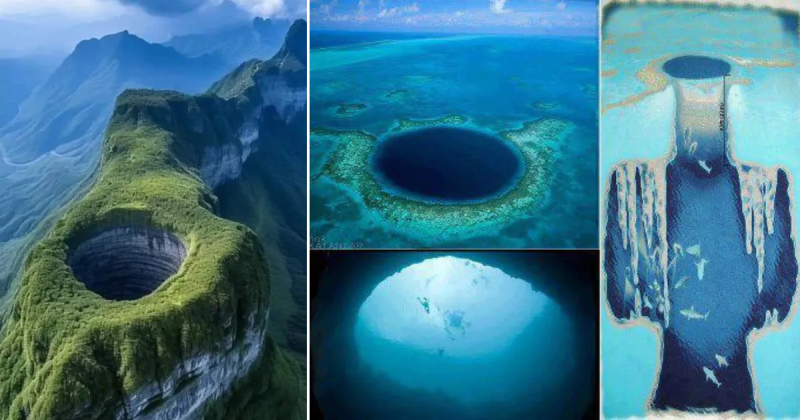- Govt to cut savings certificate profit rates from January |
- Gold prices hit fresh record in Bangladesh within 24 hours |
- Election to be held on time, Prof Yunus tells US Special Envoy |
- Moscow wants Dhaka to reduce tensions domestically, also with Delhi |
- Saarc experts meet to reduce livestock-origin greenhouse gases |
Sinkholes: Causes, Risks, and the World’s Worst Collapses

Natural sinkholes in Xiaozhai Tiankeng, China (left) and Great Blue Hole, Belize (right)
Sinkholes are sudden ground collapses that occur when the surface drops into empty spaces below. They can be as small as a garden dip or large enough to swallow homes, cars, and entire streets. Understanding how sinkholes form, why they are dangerous, and where the deadliest ones have appeared helps explain the scale of this natural hazard.
Most sinkholes develop in areas where rock such as limestone, dolomite, or gypsum gradually dissolves in slightly acidic rainwater. Over centuries, underground gaps and caves form until the surface above can no longer support its own weight. When the roof collapses, a sinkhole suddenly appears—sometimes with devastating force.
While natural processes are the main cause, human actions can accelerate sinkhole formation. Excessive groundwater pumping lowers water levels, weakening underground support. Mining, drilling, and construction can leave voids or stress fragile rock layers. Leaking pipes can wash away soil, while heavy structures on weak ground can cause sudden collapses.
Sinkholes often strike without warning. They can swallow houses, roads, or vehicles in seconds, disrupt utilities, contaminate water, and cause fatalities. Large sinkholes also destabilise surrounding land and water systems, creating long-term risks.
Xiaozhai Tiankeng, China: The world’s largest sinkhole, with vertical walls over 600 metres deep.
Great Blue Hole, Belize: A giant marine sinkhole hazardous to divers.
Bayou Corne, Louisiana, USA: Formed by a salt dome collapse in 2012, forcing 350 people to evacuate.
Guatemala City, Guatemala: Massive urban sinkholes in 2007 and 2010 swallowed buildings and killed several people.
Seffner and Winter Park, Florida, USA: Residential collapses, including one fatal incident in 2013.
Devil’s Sinkhole, Texas, USA: A vertical cavern more than 350 feet deep, extremely dangerous to explore.
Berezniki, Russia: Mining-related collapses that destroyed buildings and left unstable land.
Yucatán Cenotes, Mexico: Natural sinkholes filled with water, some with steep drops and hazardous cave systems.
Infrastructure Collapses Worldwide: Smaller sinkholes under roads and bridges that cause sudden chaos and damage.
Sinkholes demonstrate how both nature and human activity can rapidly reshape the land. Careful planning, infrastructure maintenance, groundwater management, and monitoring of vulnerable areas are vital to reduce risks. Without such precautions, sinkholes can appear suddenly, leaving behind destruction and long-lasting challenges for communities.

